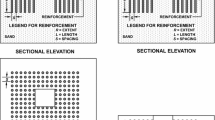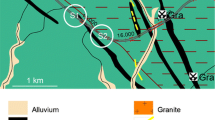Summary
In the lower parts of Belgium, Germany, Britain and Holland an increasing number of road sections is laid on hydraulic fills. The scarcity of medium and coarse sand stimulates the use of fine, silty sands.
The use of this fine sand may delay the accessibility of the fill surface. In road building the sand for filling can only be stored along the alignment. Hence, frequent extension of the pipe line is necessary. The fill surface should be quickly accessible to bulldozers or other equipment to place the pipe line sections and to grade the surface. The suitability of silty sand for use in hydraulic fills is therefore strongly determined by the increase of its bearing capacity in the course of time.
In the past few years a method was developed to predict the development of the bearing capacity from the analysis of samples taken from the borrow site. The method is based on the combination of three relations:
-
the relation between the C.B.R.—value (a measure of the bearing capacity) and moisture content,
-
the relation between the moisture content at the surface and the depth of the phreatic level,
-
the relation between the depth of the phreatic surface and the time elapsed after construction of the fill.
The predictions were tested on two experimental sections of different fills. The agreement between the predictions and measurements appears satisfactory.
Résumé
Dans les domaines bas de la Belgique, de l’Allemagne, de l’Angleterre et de la Hollande une grande partie des remblais est exécutée par voie hydraulique. Le manque de sables grossiers ou fins favorise l’utilisation des sablons. En conséquence l’accessibilité de la surface des remblais est ralentie tandis que les méthodes modernes d’exécution exigent que les terrains sont accessibles le plus tôt possible pour les bulldozers et d’autres matériels, afin que les conduits soient prolongés, etc. L’aptitude des sablons pour l’utilisation en remblais hydrauliques depend fortement de la résistance mécanique pendant l’écoulement du temps.
Pendant les derniers ans passés une méthode a été développée pour la prédiction de la résistance de la surface basé sur l’analyse d’échantillons du chantier. La méthode est basé sur la combinaison de trois rélations:
-
valeur C.B.R. et l’humidité
-
l’humidité en surface et la profondeur de la nappe
-
la profondeur de la nappe et le temps écoulé depuis la construction du remblai.
Les prédictions ont été soumises à des tests sur deux planches expérimentales diverses. L’analogie entre la prédiction et les mesures se trouvait satisfaisante.
Similar content being viewed by others
References
AMERICAN SOCIETY OF TESTING MATERIALS (A.S.T.M.) (1973) : Annual Standards, Part 11.
NIEUWENHUIS J.D. (1974) : Le remblayage hydraulique en construction routière. — La Technique Routière.
Author information
Authors and Affiliations
Rights and permissions
About this article
Cite this article
Nieuwenhuis, J.D. The bearing capacity of hydraulic fills. Bulletin of the International Association of Engineering Geology 10, 55–56 (1974). https://doi.org/10.1007/BF02634633
Issue Date:
DOI: https://doi.org/10.1007/BF02634633




